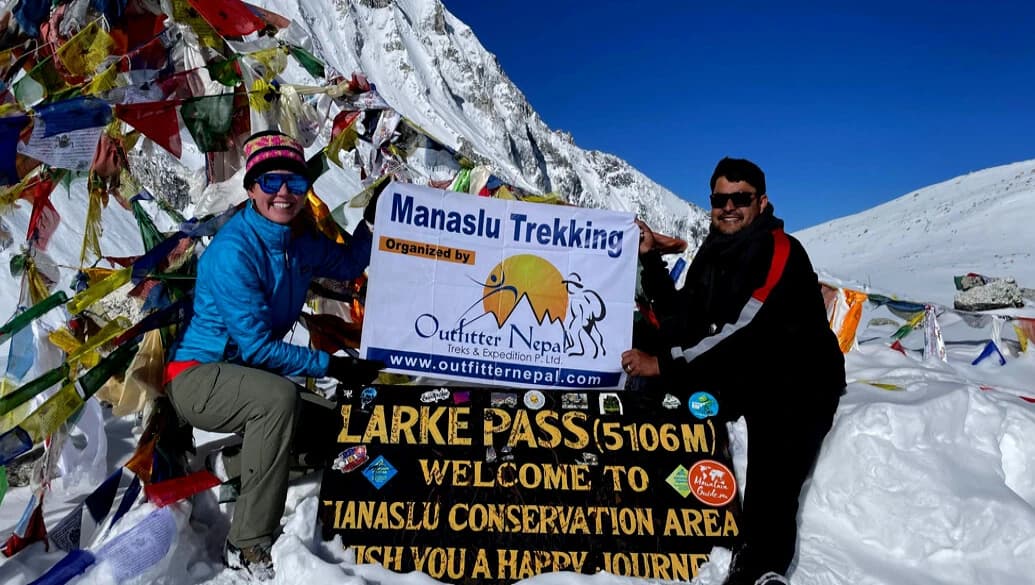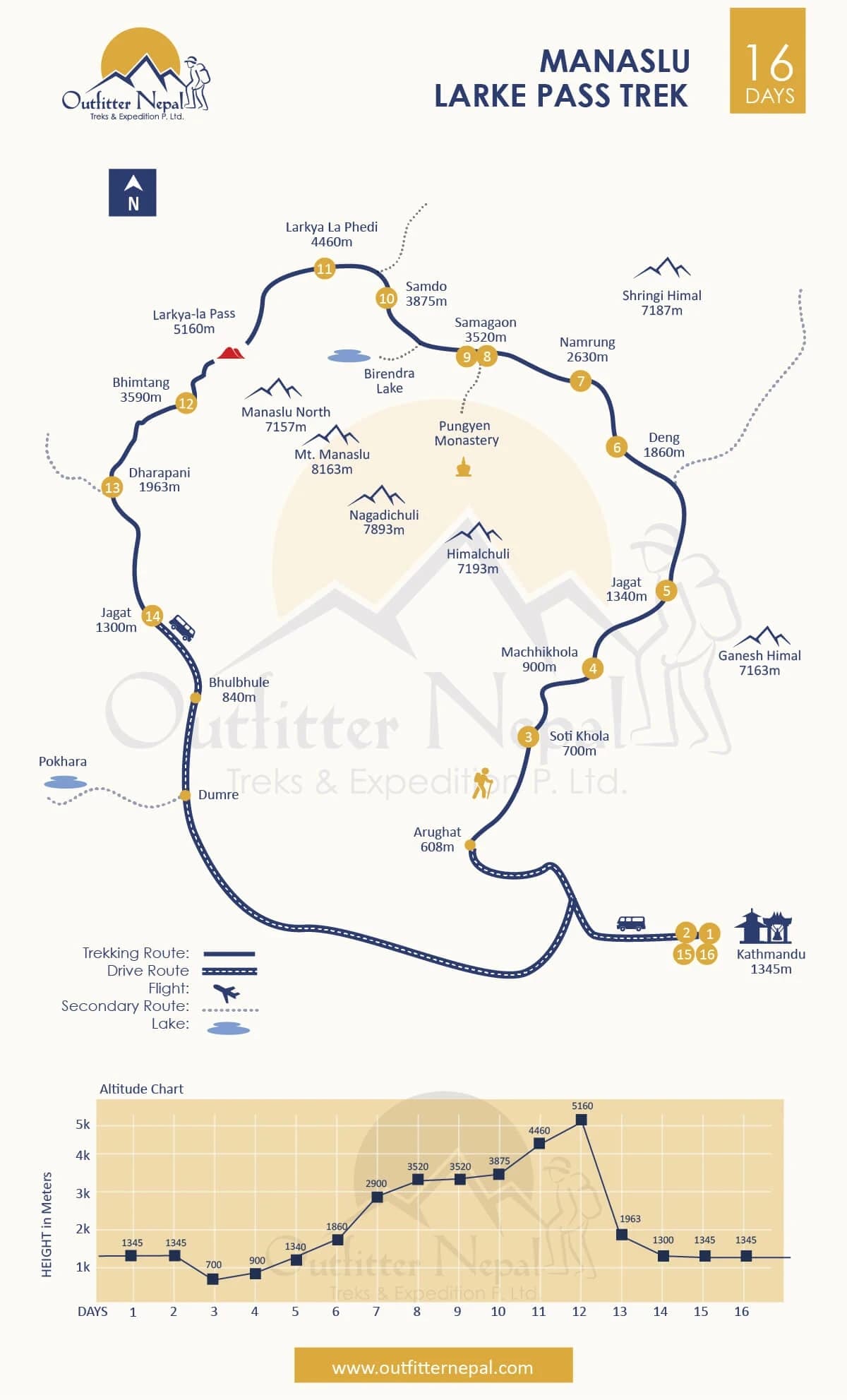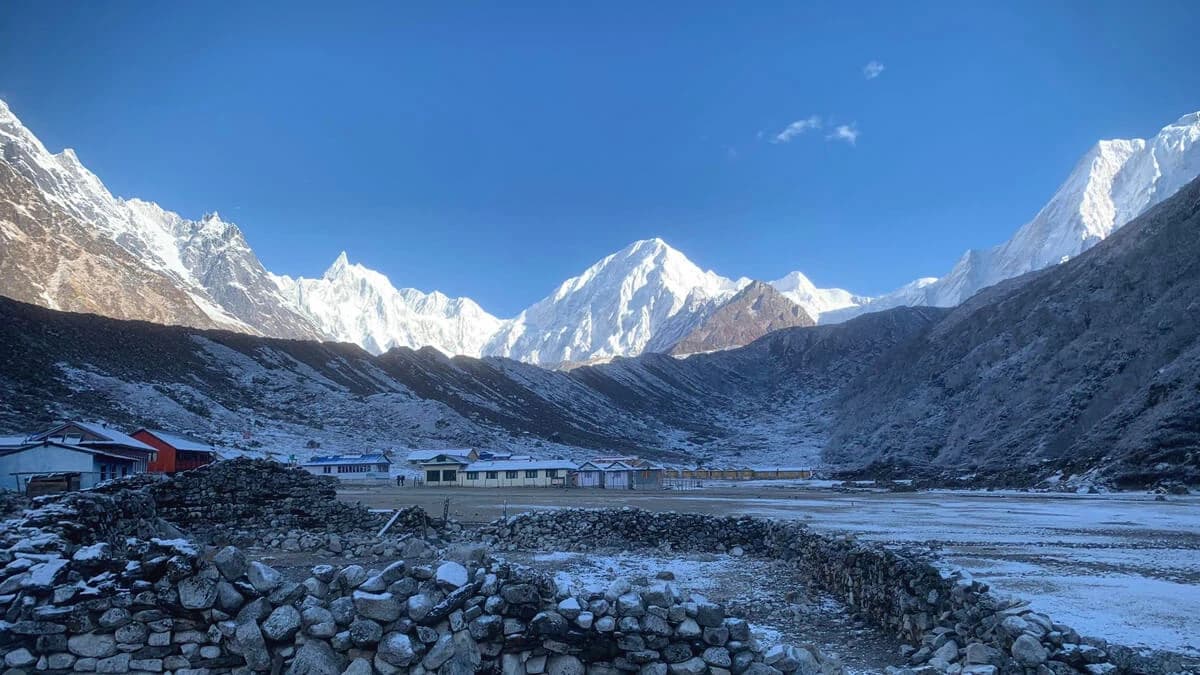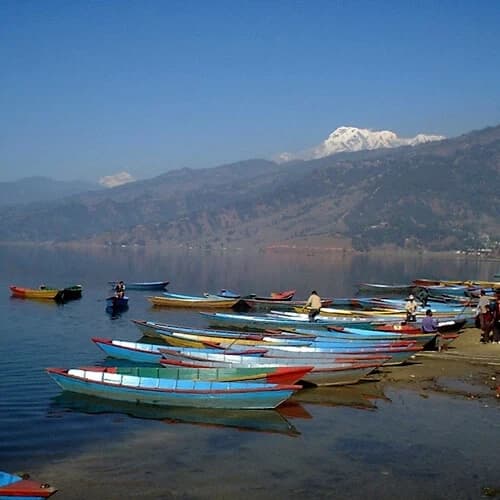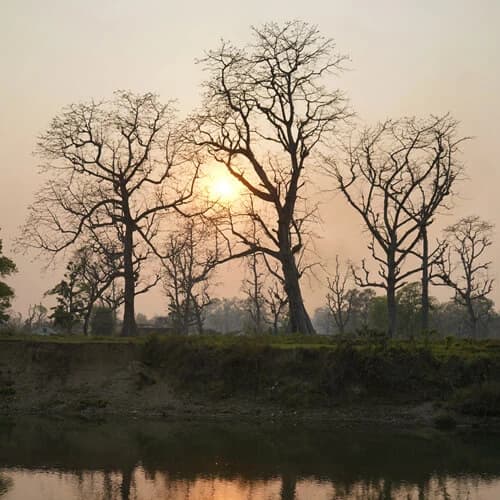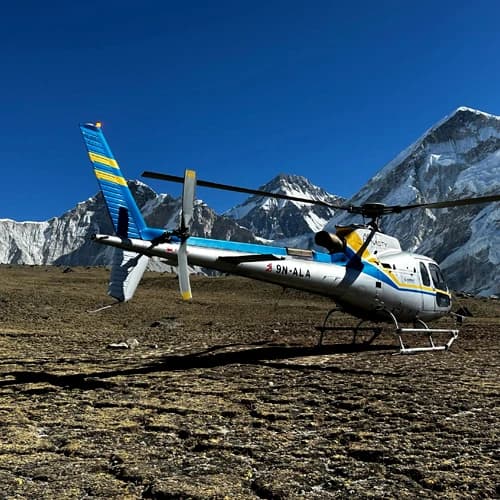Best Features of the Manaslu Larke Pass Trek with Larke Peak Climbing
- Walk beside some of the tallest peaks in the world, like Mt. Manaslu, Himalchuli, Ganesh Himal, and even parts of the Annapurna range. The views are stunning from start to finish.
- Reaching the top of Larke Pass is a moment you won't forget. It's a long, early morning climb, but the sunrise, the stillness, and the mountain panoramas make the experience worth it.
- This region is much quieter than other popular treks in Nepal. You’ll often have the trail to yourself, passing through remote villages and untouched valleys.
- Immerse yourself in the lifestyle of the high Himalayan villages influenced by Tibetan culture. Visit old monasteries, see prayer flags flutter in the wind, and meet locals who’ve lived in these mountains for generations.
- Every day brings something new, from green forests and waterfalls to alpine meadows and rocky mountain passes. It’s like walking through several worlds in one journey.
- This journey isn’t just beautiful, it’s an achievement. You’ll challenge yourself, disconnect from the busy world, and come back with stories you’ll never stop telling.
Manaslu Larke Pass Trek with Larke Peak Climbing Overview
The 18-day Manaslu Larke Peak Climbing is one of Nepal's most rewarding alpine adventures, ideal for trekkers who want to step into the world of Himalayan mountaineering. Located north of the Larke La Pass at 5,160 meters, the Larke Peak (6,249m) demands acclimatization and physical endurance. You must also know basic climbing gear such as harnesses, crampons, ice axes, helmets, and fixed ropes. The final push to the summit involves navigating steep snow slopes, icy flanks, and exposed ridgelines, which requires assistance and navigation by certified climbing guides.
Conquering the Larke Peak includes structured acclimatization days, a stocked base camp, and a high camp setup below the summit. These measures allow climbers to rest and adapt to the increasing elevation before making the final push. As safety is our top priority, Our Larkey Peak Climbing is supported by certified gears, emergency oxygen, satellite communication, and a climber-to-guide ratio of 2:1. You will be equipped with a comprehensive gear before the expedition, including mountaineering boots, carabiners, layered alpine clothing, and glacier goggles, which are essential at such terrain, and elevation.
Compared to trekking-only adventures, the Manaslu Larke Peak Climbing offers an immersive connection to the Himalayas with fewer crowds and a greater sense of reward. The challenging trip winds through the restricted Manaslu Conservation Area, offering you panoramic views of Mt. Manaslu (8,163m), Ganesh Himal, Himalchuli, and the Annapurna ranges. You will be hiking through ancient monasteries, Tibetan-influenced villages, and rhododendron forests filled with biodiversity. Whether you are aiming to build a mountaineering resume or want to pursue your first summit experience, the Manaslu Larke Peak Climbing offers an unforgettable experience.
Note: The itinerary can be extended to include the secluded Tsum Valley, which is known for its preserved Tibetan Buddhist heritage.
Why Climb Manaslu Larke Peak with Outfitter Nepal?
Outfitter Nepal is a licensed company with over a decade of experience guiding climbers safely through the Himalayas, including the technical ascent of Larke Peak. Recognized by official governing bodies such as Nepal Tourism Board (NTB), Trekking Agencies' Association of Nepal (TAAN), and the Nepal Mountaineering Association (NMA), we operate with full industry accreditation and legal compliance, ensuring a transparent and trustworthy experience from start to the summit.
What truly sets us apart is our proven safety record and deep local knowledge. Our guides have an understanding of the Himalayan foothills and alpine terrains, having led several Larke Peak expeditions. Each of our climbs includes a meticulously designed prioritizing of proper acclimatization and a strategically placed high camp. We will also assist you in acquiring the necessary restricted area permits, including the MCAP (Manaslu Conservation Area Permit), ACAP (Annapurna Conservation Area Permit), and Special Manaslu Restricted Permit, to ensure a seamless travel experience.
With hundreds of satisfied climbers and trekkers, many sharing their stories on travel forums, independent blogs, and TripAdvisor, OutFitter Nepal has earned a reputation for value, reliable service, and customization. Whether you are a part of a group or a solo traveler, we offer you fully customizable itineraries and fixed departures with no hidden fees. From first contact to the summit and back, our dedicated team is committed to delivering an enriching, safe, and unforgettable Himalayan climbing experience.
